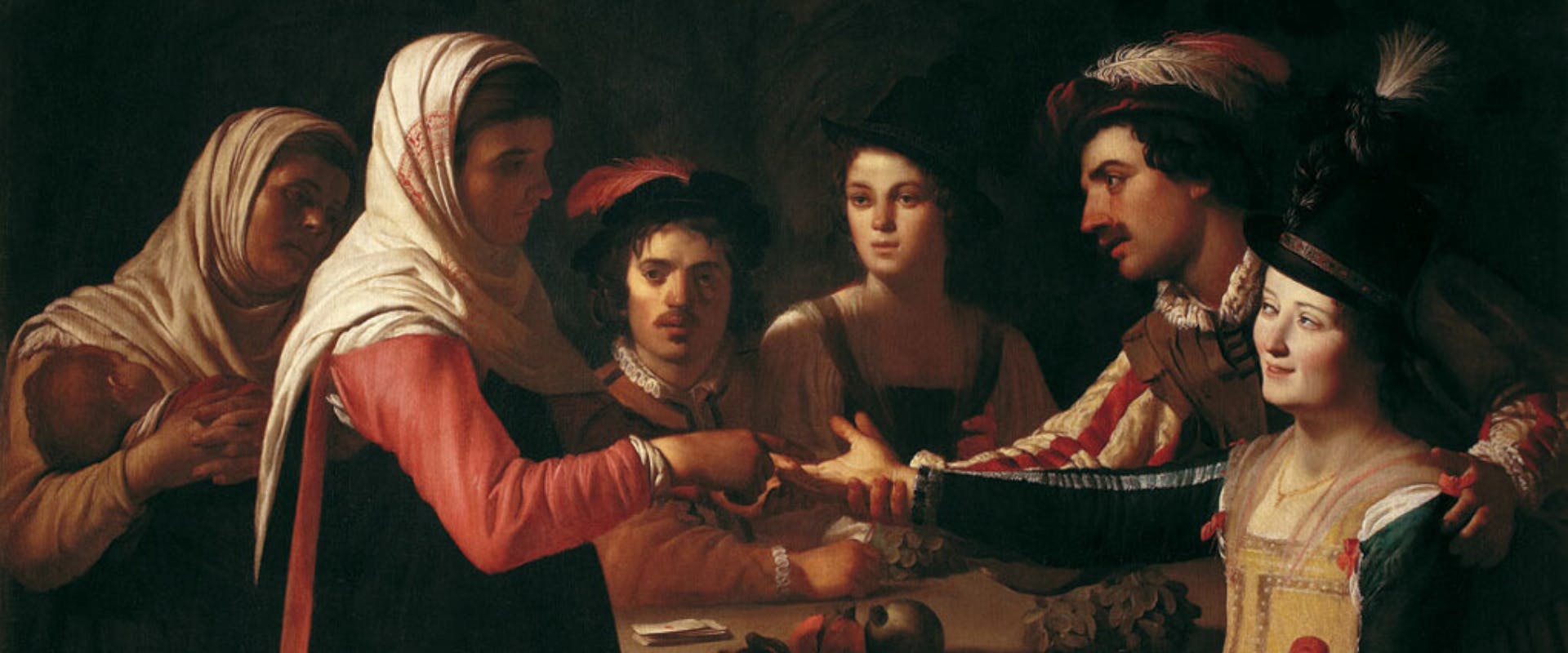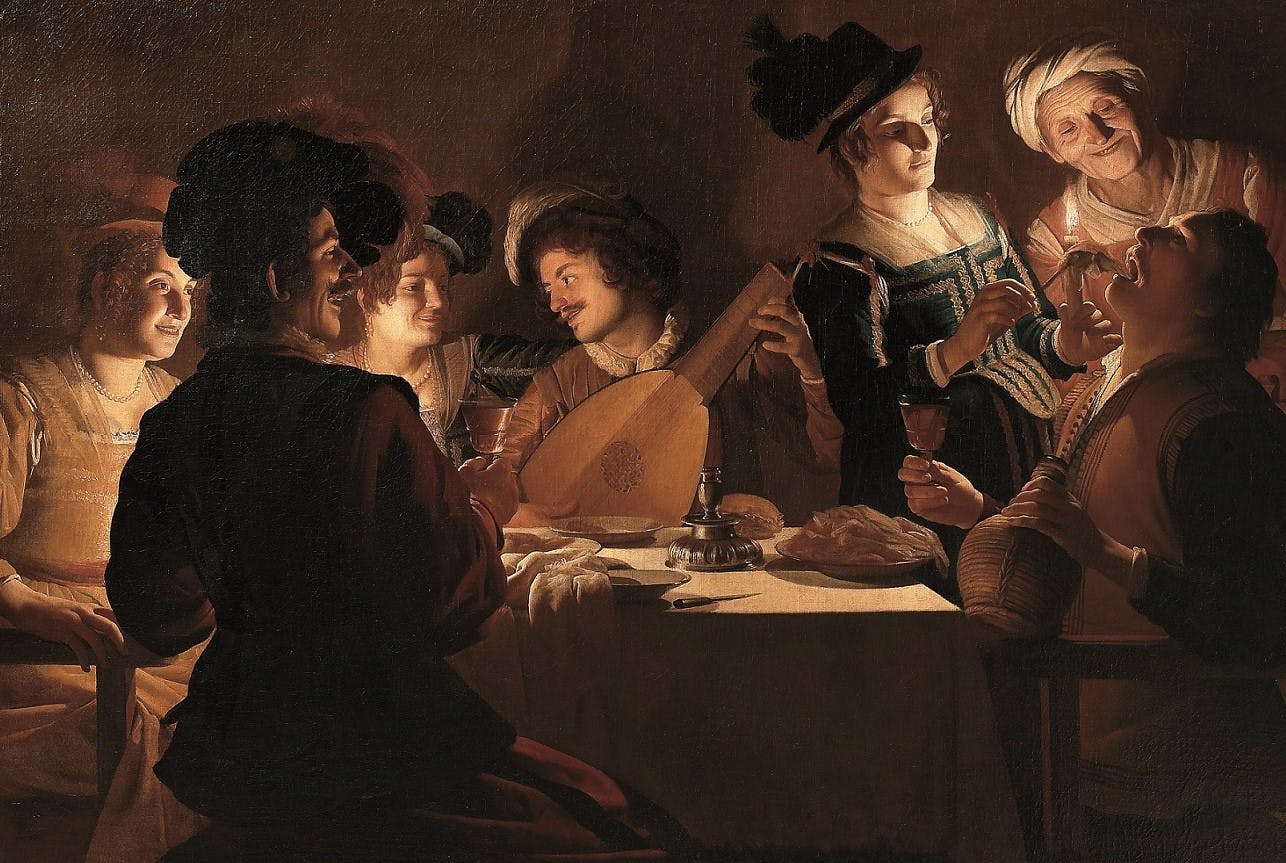Gherardo delle Notti. Bizarre paintings and cheerful suppers
The Uffizi Gallery inaugurates the 2015 exhibition season with the first monographic show dedicated to the Dutch-born Caravaggesque painter Gerrit van Honthorst, better known to the Italian public as Gherardo delle Notti
When Gerrit van Honthorst suddenly left Rome in the late spring of 1620 to return permanently to his native Utrecht, it must have been about ten years since he moved to Italy. He had probably arrived in Rome at the beginning of the second decade of the 17th century (c. 1610-1611).
The painter's period of activity in Italy is qualitatively the richest in stylistic novelties. His approach to the Caravaggio revolution was almost immediate, and his early paintings attest to the strength and rawness of the art of a young northern painter dazzled by Merisi's naturalism.
Honthorst quickly became a great protagonist, and his works had the honour of occupying important altars in Roman and Genoese churches, an uncommon success for a master with a solid naturalistic style. He was soon sought after by prestigious collectors, such as the Marquis Vincenzo Giustiniani and the Grand Duke of Tuscany Cosimo II.
It is also thanks to Cosimo II's passion for Gherardo that today, Florence, notably the Uffizi Gallery, owns five of his beautiful canvases: three dedicated to convivial subjects, which were decisive for developing this type of images in the Italian and Nordic contexts. Therefore, Florence is a significant venue to set up a show on the Italian activity of Gherardo delle Notti, who is a painter of absolute importance and international interest, to whom a monographic exhibition had not yet been dedicated, either in Italy or abroad. Indeed, artworks have been loaned from prestigious international museums for this occasion.
The exhibition accurately documents the early more northern phase of his activity and his more famous and mature one. In addition to the works executed in Italy, a selection of paintings made by Honthorst in the Netherlands in the first years after he departed from the Italian peninsula is also on display, documenting how his colour palette gradually lightened.
A large section records the significant influence Gherardo had on the development of the genre of night-light painting. Furthermore, the exhibition includes Caravaggio's Toothpuller from the Palatine Gallery, executed in 1609 and soon reaching the Grand Ducal court. The artwork must have been decisive for developing the themes preferred by the Dutch painter, who would refer to it in at least three paintings.
The exhibition, curated by Gianni Papi like the catalogue published by Giunti, is promoted by the Ministry of Cultural Heritage and Tourism with the Regional Administration for the Cultural and Landscape Heritage of Tuscany, the Special Superintendence for the Historical, Artistic and Ethno-anthropological Heritage and the Polo Museale of Florence, the Uffizi Gallery, Firenze Musei and the Ente Cassa di Risparmio of Florence.

